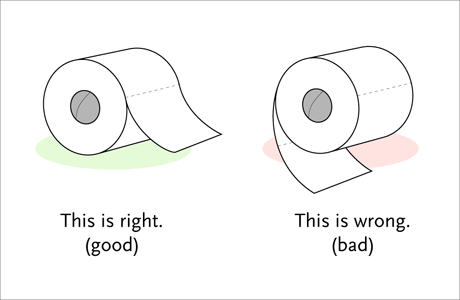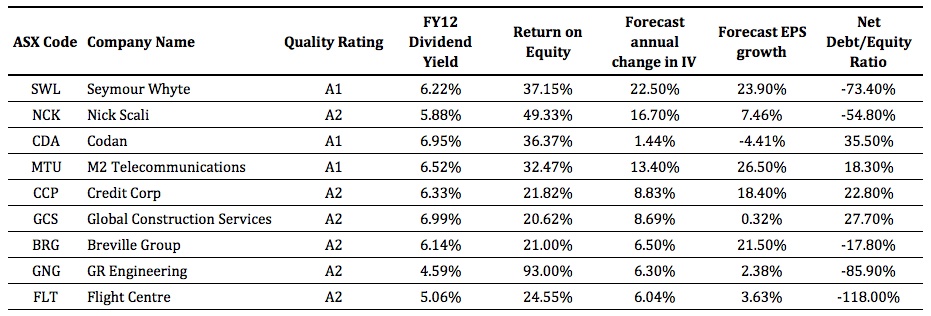 I’m always looking for Value.able contributions that will enahnce the value of our Insights blog.
I’m always looking for Value.able contributions that will enahnce the value of our Insights blog.
Scott’s comparison of the performance of a Value.able A1 portfolio and a conventional portfolio promoted by a large bank over the last six months is one such example. Nick’s contribution here about independent thinking is another. Take it away Nick…
“Most people would rather die than think, in fact they do so.” Bertrand Russell
The title of this post which Roger has kindly let me write for his blog may seem like such elementary and common sense advice that it need not be written at all – kind of like telling a friend to make sure he looks both ways before crossing the freeway.
Is thinking independently when it comes to investing really so obvious? And do people practice it consistently? I would say not. Just because something is obvious does not mean it will be practiced and not thinking independently, by which I mean not thinking for yourself and making up your own mind on an issue (not necessarily having a contrary opinion for the sake of having a contrary opinion), is one of the surest ways to destroy wealth and end up dissatisfied as an investor (aside from the strong likelihood of losing money you will also lack autonomy over your future). I have made this mistake in the past and can speak from experience.
Ben Graham once said “You are neither right nor wrong because the crowd disagrees with you. You are right because your data and reasoning are right.”
And in the 1985 Berkshire Hathaway Annual Letter to Shareholders, Warren Buffett shares with his readers this story passed down from Ben Graham which illustrates the lemming-like behaviour of the crowd: “Let me tell you the story of the oil prospector who met St. Peter at the Pearly Gates. When told his occupation, St. Peter said, “Oh, I’m really sorry. You seem to meet all the tests to get into heaven. But we’ve got a terrible problem. See that pen over there? That’s where we keep the oil prospectors waiting to get into heaven. And it’s filled – we haven’t got room for even one more.” The oil prospector thought for a minute and said, “Would you mind if I just said four words to those folks?” “I can’t see any harm in that,” said St. Pete. So the old-timer cupped his hands and yelled out, “Oil discovered in hell!”. Immediately, the oil prospectors wrenched the lock off the door of the pen and out they flew, flapping their wings as hard as they could for the lower regions. “You know, that’s a pretty good trick,” St. Pete said. “Move in. The place is yours. You’ve got plenty of room.” The old fellow scratched his head and said, “No. If you don’t mind, I think I’ll go along with the rest of ’em. There may be some truth to that rumour after all.”
This is not the fate you want for yourself!
And don’t let hubris get in the way. Intelligence alone will not keep you away from the dangers of crowd behavior and emotion. One of history’s most gifted minds and scientists, Sir Isaac Newton, was caught up in the emotion and chaos of crowd behavior which resulted in him losing his fortune in the South Sea Shipping Company Bubble. Sir Isaac Newton had previously made a packet on this very same company although after selling and watching the share price continually keep rising, he reinvested everything he had before the crash. For as long as he lived he forbid the words South Sea Shipping Company to ever be mentioned in his presence. It was not a lack of intelligence which brought Sir Isaac unstuck, it was, I argue, his lack of independent thought on the merits of the South Sea Shipping Company as a suitable investment.
“An investment operation is one which, upon thorough analysis, promises safety of principal and an adequate return. Operations not meeting these requirements are speculative.” Ben Graham.
Once you have determined to think independently and make up your own mind on a company’s current strengths and weaknesses, and its current and future earnings prospects, how do you best do this? Perhaps the most effective way is to follow the advice of the famous algebraist Carl Jacobi who said ‘Invert, always invert.’ So if from your reading you believe company XYZ to be possible investment material (either from Roger’s blog, the newspaper, a friend, your stockbroker) read everything you can and formulate as strong a case as you can on why it would make a lousy investment. If, after having made as strong a case against the company as the information allows, it still looks pretty good and is selling at an attractive price, then it is worthy of further consideration. It has also been useful to me in the past having friends help me out with this. Usually before making an investment I’ll ask my most intelligent and able friends for their opinion on why I shouldn’t invest in company XYZ. This will not mean that you’ll never make a mistake again, although when you do at least you’ll be able to understand why (having studied the reasons against making the decision in the first place).
“I want to be able to explain my mistakes. This means I do only the things I completely understand.” Warren Buffet
Charlie Munger, in a speech given at USC (which you can all view on YouTube) says “I have what I call an iron prescription that helps me keep sane when I naturally drift to preferring one ideology over another and that is I say I am not entitled to have an opinion on this subject unless I can state the arguments against my position better than the people who are supporting it.” This is great advice, and to tailor it to investing all you need to do is replace the word ‘subject’ with ‘company.’
Charlie Munger also likes to talk about the importance of having a latticework of mental models in your head and how the big ideas from across a broad range of disciplines can often be used in sync to best analyse a particular problem. I won’t expand on this now, although can recommend his speeches and essays which are easily available on the internet.
Having a great interest in investing, I find this blog is a wonderful source of ideas and learning and really enjoy reading the comments written every day. That said, one way in which I believe it could be improved is for there to be more argument and questioning, something which is happening more and more as the share price of recent blog favorites has dropped. If someone says they believe XYZ to be a great quality company without providing reasons they should be held to account and asked why? If the only response is that Roger has it as an A1 then a fail grade would be mandatory. If someone says they believe that company XYZ has excellent earnings prospects they should again be asked why? And if their response is that the analysts consensus on Comsec says so then again, another F.
I hope that this post may have been of some interest and if you have some stories of success as a result of independent thinking, I would be very interested in reading them.
Nick Mason
Roger’s Note: And if you have a similarly lucid and instructive idea that you would like share here at our Insights blog, go ahead and submit. Not every contribution can be published as a post, but we will certainly post those we like.
Posted by Roger Montgomery and his A1 team, fund managers and creators of the next-generation A1 stock market service, 23 September 2011.


